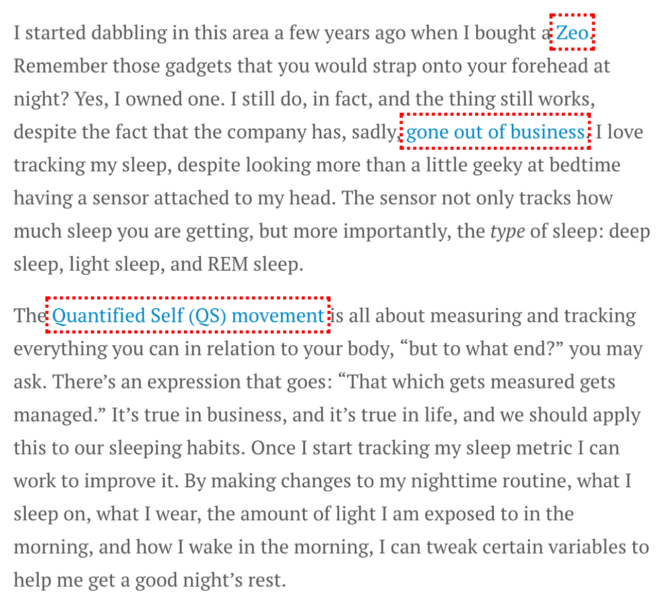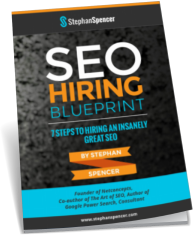This article was originally published on Search Engine Land.
So you’ve written an amazing piece and scored the placement of your dreams. It took hours of blood, sweat and tears to brainstorm the topic, develop a clever hook, write the copy and source compelling imagery — not to mention the research and the outreach required to score the perfect publisher. And now you eagerly await the payoff: that hard-earned “link love” to drive up your Google rankings.
Well, unfortunately, depending on where it was published, you may be waiting a long time.
Let me let you in on a dirty little secret: publishing your content on many popular sites gives you zero SEO benefit.
Huffington Post changes the game
Last year, The Huffington Post, a popular site for bloggers to get more exposure and links to their sites, substantially changed their contributor platform — and not for the benefit of its contributors.
Now, unless a HuffPo editor decides to feature your article, the articles you create for the Huffington Post are tagged with the meta robots noindex tag.
This tag tells Google and the other search engines not to allow the page into the search engine’s index, or database.
Consequently, your article will only see traffic from you sharing it with your own audience via social media or your email list. It won’t be in the search engine index (so no searches will turn it up), nor will you be able find it by browsing or searching within the Huffington Post site.
Yes, some selected articles will be featured (and for those, the noindex tag will be removed), but for most authors, their article will be lost in the Invisible Web.
Use of nofollow torpedoes the SEO benefit for you
Noindexing contributed articles is not a common practice, so let’s talk about a more common one that also removes most of the SEO benefit from your published content. This practice is widespread and one you need to watch out for.
When publishing articles from guest authors, most publishers include an attribution along with the article. The attribution, or bio, shares a few sentences about the author and often contains a link back to the author’s website. This link, along with any self-referencing links that you included in the main body of the article, is where SEO comes in; as I’m sure you know, acquiring more high-quality, relevant backlinks is what helps your site rank in the Google search results.
However, I find that many publishers will add a rel=nofollow attribute to all the links in your article (e.g., SheKnows community, LinkedIn Pulse), or just to the links in your byline/bio (e.g., Inc.com). Some will do it selectively to some articles, but not others (like here on LifeHack.org, where I was one of the unlucky ones who got the nofollow treatment).
You’ll even find some major publishers nofollowing the links contained within the articles written by their own staff (like in this example from Self.com). So much for getting the full value out of your public relations initiatives!
Some popular sites even use a meta robots nofollow, which nofollows every single link on the page (for example, check out this BuzzFeed-sponsored post).
Like the meta robots noindex tag, the use of meta robots nofollow (or of rel=nofollow on specific links) is not immediately apparent, so unless you are in the habit of viewing the HTML source of web pages or you have one of the tools I cover later in this article, you are none the wiser that these links provide your site no SEO benefit.
Rel=nofollow signals to Google and the other search engines that the publisher doesn’t vouch for the link. The publisher is essentially saying: “I don’t trust where this link is pointing to, don’t bother crawling it.” Given the link is not vouched for, none of the SEO authority of the source site will pass through.
Using the rel=nofollow tag became more common after Google stepped up its efforts against link spam in recent years. Guest posts with keyword-rich text links were a target of Google link spam penalties, even if the article was well written. Many publishers, instead of vetting the contributors and their articles more carefully, instituted the policy of using the rel=nofollow for links included in guest contributions.
So without regard for your hard work, these publishers are eliminating any SEO benefit from the article for your site. Now, all is not lost. You can still get an increase of direct click-through traffic from a well-received and shared article. And of course you get more brand exposure. But the application of rel=nofollow to a link means that that link won’t contribute to your search engine rankings one bit.
Wouldn’t you prefer to get both exposure and the SEO benefit?
3 tips for finding SEO-friendly sites for publishing your content
Here are three checks you should add to your research process when you are looking for placement targets for your content marketing efforts:
Check #1: Are there links to the authors’ sites?
On a site that you are considering as a target for your content marketing efforts, look at existing contributed articles and see if you can find links to the authors’ sites.
Oftentimes, the author’s name links to an internal page rather than to the author’s website. That alone waters down potential PageRank-passing power from the article, since it is an extra step away from the article. Then, you need to check if that author page passes PageRank to the author’s site. In the case of Entrepreneur.com and Mashable.com, it does — though it would be ideal if these sites linked directly from the article.
If your goal is to acquire “do follow” links for your site directly from your contributed articles, strike these sorts of sites off your target list and move on.
Check #2: Is there an editorial review in place?
High-quality sites care about the content they publish and will have a review process in place to vet contributed articles.
Authoritative sites will (and do) ask you to revise your article until it meets their standards, and they can be choosy about the topics they’re interested in publishing.
Huffington Post’s recent change stems from their desire to decrease the load on their blog team. Posts that now publish on the platform no longer go through a review but, as we explained above, are also not visible in search unless singled out by an editor to feature.
This makes HuffPo more of a platform than an actual publisher, which brings me to the point I want to make here: if there are no hoops to jump through aside from creating an account, then it’s likely that your post will not have the SEO impact that you desire.
Check #3: Are the outbound links nofollowed?
For our third (and most important) check, unless you want to look at source code, you will need a tool to check the outbound links for a rel=nofollow tag on the guest articles on your candidate site.
Here are a couple of options for tools you can use to highlight nofollowed links:
- MozBar. Use of MozBar requires creating a free account with Moz.com. Once installed, you have a handy tool in your browser (available for both Chrome and Firefox) that will not only tell you whether a link has been tagged as nofollow, but also allows you to see whether the meta robots tag has been set. Click on the pencil icon in MozBar and then on “no-followed,” and all nofollowed links will be highlighted for you. Use the page analysis icon to look at the “General Attributes” of a page to see if the meta robots tag has been set.
- Nofollow browser extensions. I like NoFollow Simple, which is available for Chrome, Safari, Firefox and Opera.

Add these checks to your vetting process
By adding the above checks to your vetting of content marketing targets, you will save yourself a lot of wasted effort when it comes to improving your SEO.
There are plenty of good publishers out there who will help your SEO by publishing your article with followed links, as long as you write a valuable article for their audience and stick to a branded link in your bio.
Be smart with your time. Savvy contributors are aware of which publishers have policies that are not beneficial for their SEO.


 SIGN UP FOR EXCLUSIVE WEEKLY CONTENT
SIGN UP FOR EXCLUSIVE WEEKLY CONTENT 


Leave a Reply